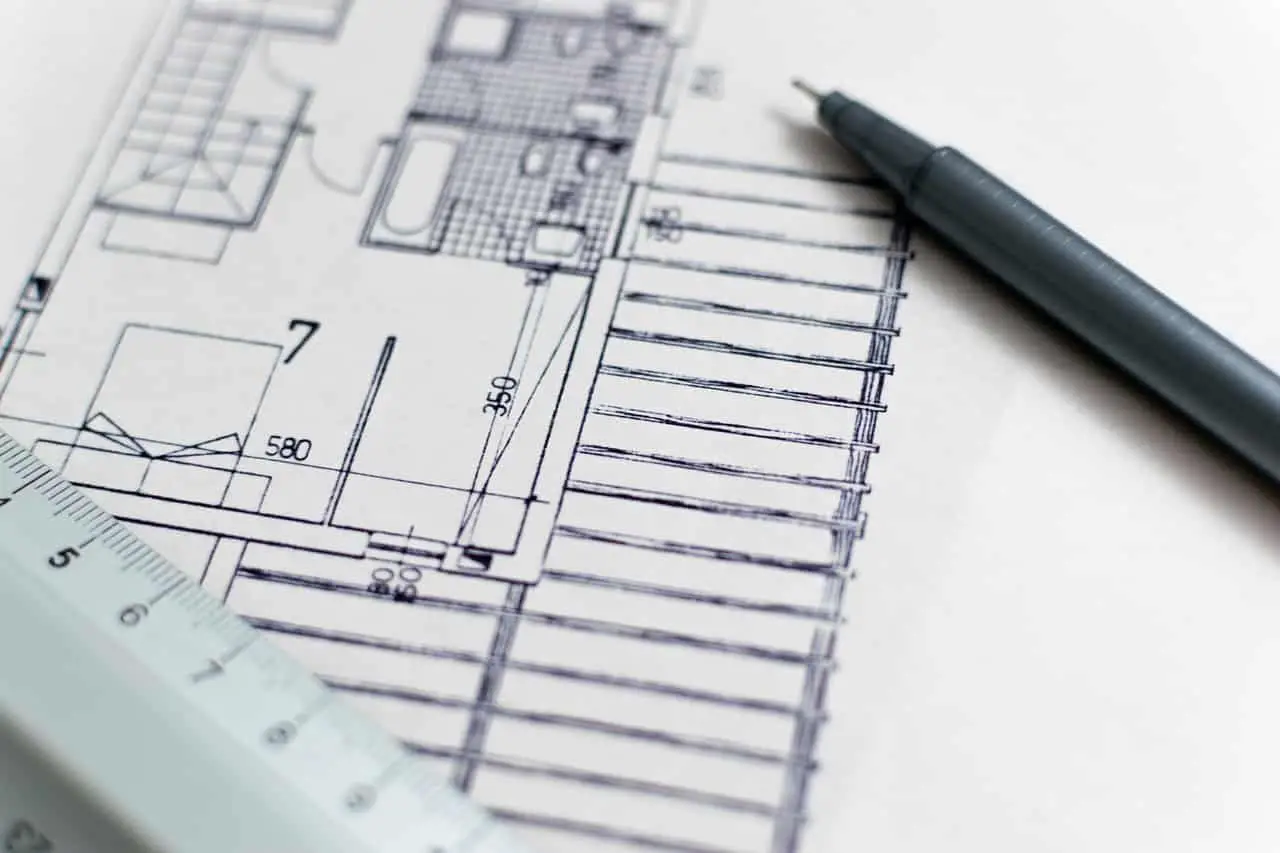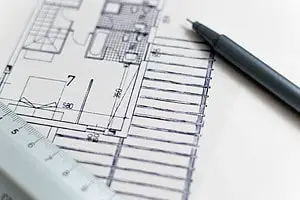Architecture is a complex and multifaceted field that requires a unique combination of creative and technical skills. As such, architects must undergo extensive training and education to effectively balance their design and technical abilities.
Architect school is a rigorous and challenging journey that involves a combination of academic coursework, hands-on experience, and mentorship from experienced architects.
The key to achieving success in architect school lies in the ability to master the art of creativity and technical knowledge. Architecture is a discipline that demands a high level of creativity, innovation, and imagination.
However, architects must also possess a thorough understanding of technical principles, including structural engineering, building systems, and construction materials. By balancing these two critical components, architects can create designs that are not only aesthetically pleasing but also functional, sustainable, and safe.
Key Takeaways
- Architects require a unique combination of creative and technical skills, and must undergo extensive training and education.
- Understanding building codes and regulations is essential for architects, as is creating sustainable and safe structures.
- A strong portfolio is crucial for aspiring architects to showcase their abilities and stand out in a competitive job market.
- Balancing design and technical education produces well-rounded graduates who can create buildings that are functional, safe, and cost-effective.
The Importance of Balancing Design and Technical Education
Achieving a balance between design and technical education is crucial in architect school as it ensures that graduates possess the necessary skills to create innovative and functional designs while also being able to navigate the technical aspects of the profession.
Design education focuses on creativity, aesthetics, and conceptualization. It teaches students to develop a vision and turn it into a viable design.
Technical education, on the other hand, provides practical knowledge about construction materials, building codes, and engineering principles. It equips students with the skills to make their designs structurally sound, safe, and environmentally sustainable.
In the architecture profession, design and technical expertise are equally important. A well-designed building must also be functional, safe, and cost-effective. Therefore, architects must be able to combine their creative flair with technical knowledge to develop designs that meet the needs of the clients and adhere to the standards of the industry.
By balancing design and technical education, architect schools can produce graduates who possess a well-rounded skill set and are capable of creating innovative designs that are both aesthetically pleasing and technically feasible.
Mastering the Art of Creativity and Technical Knowledge
The mastery of creativity and technical knowledge is essential for architects to create sustainable and safe structures while adhering to building codes and regulations.
Understanding the intricacies of building codes and regulations is crucial to ensure that designs comply with safety and environmental standards.
Additionally, the integration of sustainable practices requires architects to balance creativity with technical knowledge to create structures that are both aesthetically pleasing and environmentally responsible.
Understanding Building Codes and Regulations
Understanding building codes and regulations is a critical component of an architect’s education, as they provide the framework for ensuring safety and compliance in the design and construction process.
Building codes are a set of guidelines that outline the minimum requirements for the design and construction of buildings, including safety, structural integrity, and accessibility. These codes are enforced by local authorities and are designed to protect the health, safety, and welfare of the public.
In addition, architects must also be familiar with zoning regulations, which dictate how land can be used and developed within a given area. These regulations set out requirements for setbacks, building height, and other aspects of the built environment.
Understanding these regulations is essential for architects, as it can impact the design of a building and its ability to meet the needs of its intended users.
Ultimately, a thorough understanding of building codes and regulations is essential for architects to ensure that their designs are safe, functional, and compliant with relevant laws and regulations.
Creating Sustainable and Safe Structures
Creating sustainable and safe structures requires a comprehensive understanding of building materials, structural systems, and energy-efficient design strategies. Architects need to consider the environmental impact of their designs, as well as the safety of the occupants and the durability of the structure. One way to achieve sustainability is by using renewable resources and reducing waste in construction. This can be achieved by incorporating recycled or reclaimed materials, using renewable energy sources, and designing structures that maximize natural light and ventilation. Architects can also implement energy-efficient technologies such as solar panels, geothermal systems, and smart building systems.
In addition to sustainability, architects must also prioritize the safety of their designs. This includes both structural safety and fire safety. Architects must be knowledgeable about building codes and regulations related to fire safety, as well as the materials and systems that can be used to prevent or mitigate fires. They must also consider the effects of natural disasters such as earthquakes, hurricanes, and floods when designing structures. By considering both sustainability and safety in their designs, architects can create structures that are not only aesthetically pleasing but also functional, safe, and environmentally responsible.
| Strategies for Sustainable and Safe Structures | Examples |
|---|---|
| Use of renewable resources | Solar panels, geothermal systems |
| Incorporating recycled or reclaimed materials | Reclaimed wood, recycled steel |
| Designing for natural light and ventilation | Skylights, windows, air vents |
| Fire safety measures | Sprinkler systems, fire-resistant materials |
Proficiency in Computer-Aided Design (CAD) Software and Engineering Tools
Proficiency in CAD software and engineering tools is a crucial aspect of an architect’s education, as it enables them to create detailed and accurate designs while also streamlining the design process.
With the help of CAD software, architects can create 3D models, generate accurate drawings, and simulate the performance of structures before they are built. This helps to identify any potential issues or areas for improvement in the design, allowing architects to make necessary adjustments and improvements.
Additionally, CAD software allows architects to collaborate with other professionals involved in the construction process, such as engineers and contractors, and easily share and modify design files.
Engineering tools, such as structural analysis software, also play a crucial role in an architect’s education. These tools assist architects in determining the structural integrity of a building and identifying any potential weaknesses or areas where reinforcement may be necessary. This information is essential for ensuring the safety and longevity of structures.
By having a strong understanding of engineering principles and the ability to use relevant software, architects can create designs that are both aesthetically pleasing and structurally sound. Ultimately, proficiency in CAD software and engineering tools is essential for an architect to be successful in their career and to create sustainable and safe structures.
Learning from Experienced Architects
Learning from seasoned professionals within the field of architecture is a valuable opportunity for aspiring architects to gain insight into the practical aspects of the profession. These experienced architects have honed their skills through years of practice, and they can provide a unique perspective on design, construction, and project management.
By learning from these professionals, students can develop a deeper understanding of the industry and gain practical knowledge that can help them succeed in their careers.
When learning from experienced architects, students can expect to gain the following insights:
- Tips on how to manage projects effectively and ensure that they are completed on time and within budget.
- Guidance on how to work collaboratively with other professionals, such as engineers and contractors, to ensure that projects are completed to a high standard.
- Insights into the latest trends and innovations in the architecture industry, including new materials and technologies that can be used to improve the efficiency and sustainability of buildings.
- Advice on how to build a successful career in architecture, including how to market oneself effectively and how to manage one’s finances.
Overall, learning from experienced architects is an invaluable opportunity for students to gain practical knowledge and insights into the architecture industry. By taking advantage of this opportunity, students can develop the skills and knowledge they need to succeed in their careers and make a positive impact on the world around them.
Building a Strong Portfolio
A robust portfolio is essential for aspiring architects to showcase their abilities and stand out in a competitive job market. It serves as a visual representation of an architect’s design skills, technical knowledge, and creativity. A well-crafted portfolio not only demonstrates an architect’s expertise in the field but also highlights their unique design style and approach.
Building a strong portfolio requires a combination of technical knowledge and design skills. Architects need to showcase their proficiency in software such as AutoCAD, SketchUp, and Revit, as well as demonstrate their ability to create hand-drawn sketches and 3D models. However, a successful portfolio is not just about technical proficiency. It is also about presenting a unique perspective and approach to design. Therefore, architects need to showcase their creativity and design philosophy through their portfolio, demonstrating their ability to think outside the box and create innovative solutions to design problems.
| Element | Importance | Examples |
|---|---|---|
| Technical drawings | High | Site plans, floor plans, elevations |
| 3D models | High | SketchUp models, Rhino models |
| Hand-drawn sketches | Medium | Concept sketches, perspective drawings |
| Design philosophy | High | Personal statement, design manifesto |
| Completed projects | High | Built projects, design competitions |
| Collaborative work | Medium | Group projects, team management experience |
| Software proficiency | High | AutoCAD, SketchUp, Revit |
| Professional experience | Medium | Internships, freelance work |
| Awards and recognition | Low | Design awards, publications |
The table above outlines some key elements that should be included in an architect’s portfolio. Each element has a different level of importance, depending on the architect’s experience and design style. A strong portfolio should showcase a combination of technical knowledge, design skills, and creativity, while also highlighting the architect’s unique design philosophy and approach. Building a strong portfolio takes time and effort, but it is an essential step for aspiring architects to succeed in the competitive job market.
Staying Up-to-Date with Industry Trends and Innovations
Keeping abreast of emerging trends and technological advancements is crucial for architects to remain relevant in the ever-evolving field of architecture. With the rapid pace of technological advancements and increasing public awareness and demand for sustainable and eco-friendly designs, architects must stay up-to-date with emerging trends to stay competitive. This requires architects to have a deep understanding of the latest building materials, construction techniques, and design software, among other things.
Moreover, staying up-to-date with industry trends and innovations also allows architects to explore new design possibilities and push the boundaries of what is possible in the field. By keeping an eye on the latest trends, architects can anticipate and respond to shifts in the market, identifying new opportunities to create innovative solutions that meet the needs of their clients.
Ultimately, architects who are able to stay up-to-date with industry trends and innovations will be better equipped to create designs that are not only aesthetically pleasing but also functional, sustainable, and cost-effective.
Overcoming Challenges and Celebrating Successes
Navigating through the obstacles and triumphs of the architecture industry can be a challenging yet rewarding experience. As architects, we are tasked with the responsibility of designing spaces that not only meet the needs of our clients but also contribute to the built environment in a meaningful way. However, the path to success is not always smooth.
Along the way, we encounter a range of challenges that test our skills, creativity, and resilience. At the same time, celebrating our successes is critical to maintaining a positive mindset and staying motivated to continue pushing forward.
To overcome the challenges and celebrate the successes of the architecture industry, architects must be:
-
Resourceful: able to come up with creative solutions to complex problems using the resources available to them.
-
Collaborative: willing to work with others to achieve a common goal, whether it be with clients, contractors, or other design professionals.
-
Adaptable: able to adjust to changes in project scope, budget, or timeline without compromising the quality of the design.
-
Visionary: able to see beyond the immediate project scope and envision how the design will impact the community and environment in the long term.
-
Detail-oriented: able to pay attention to the smallest details that can make a big difference in the overall success of the project.
By embodying these traits, architects can overcome the challenges and celebrate the successes that come with being a part of the architecture industry.
Pursuing a Fulfilling Career in Architecture
Pursuing a fulfilling career in architecture requires a strong commitment to the profession’s demands and a deep passion for creating innovative and sustainable designs that positively impact society.
It is a career that requires not only creative and artistic skills but also technical knowledge and problem-solving abilities. Architects must balance the needs and desires of their clients with the practical constraints of budget, regulations, and construction feasibility. They must also be able to communicate their ideas effectively to clients, contractors, and other professionals.
To succeed in the field of architecture, one must maintain a constant drive for learning and improvement. This involves staying up-to-date with the latest trends and technologies in the field, as well as continuously developing one’s skills and knowledge. Architects must also be able to adapt to changing circumstances and work collaboratively with others.
A fulfilling career in architecture is one that allows individuals to not only create visually stunning and functional designs but also contribute to the betterment of society through the built environment.
Frequently Asked Questions
How long does it typically take to complete an architecture degree program?
An architecture degree program typically takes around five to seven years to complete. This duration depends on the level of degree pursued, the institution offering the program, and the student’s pace of study.
The Bachelor of Architecture (B.Arch.) program is usually a five-year program, while the Master of Architecture (M.Arch.) program can take up to two additional years to complete.
Most architecture programs are designed to provide a balance between design and technical education. The curriculum covers a range of subjects, including drawing and sketching, architectural history, construction materials and techniques, building science, and design theory.
Graduates of architecture programs can pursue careers as licensed architects, architectural designers, urban planners, or construction project managers.
What is the average salary for an entry-level architect?
The average salary for an entry-level architect in the United States is around $50,000 to $60,000 per year. However, this can vary depending on factors such as location, firm size, and experience level.
Architects working in larger cities or on high-profile projects may earn more than those working in smaller firms or in less urban areas. Additionally, those with additional certifications or specialized skills may also earn higher salaries.
It is important to note that while salary is a significant factor in the field of architecture, it is not the only consideration. Many architects place a high value on job satisfaction, creative fulfillment, and the ability to make a positive impact through their work.
How important is networking in the architecture industry?
Networking is an important aspect of the architecture industry as it facilitates the building of professional relationships and can lead to new opportunities.
It allows architects to connect with potential clients, collaborators, and mentors, and stay up-to-date with industry trends and developments.
Networking also provides a platform for architects to showcase their work, skills, and expertise, thereby enhancing their professional reputation.
Moreover, it can help architects to gain insights into different project types and learn from the experiences of others.
Given the competitive nature of the architecture industry, networking can give architects a competitive edge and increase their chances of success.
What are some common misconceptions about the field of architecture?
Common misconceptions about the field of architecture include the belief that architects simply create beautiful buildings without considering functionality or sustainability; that architects are solely responsible for all aspects of a project, including construction; and that architecture is a glamorous profession with high salaries.
However, architecture is a complex field that requires a balance of creative design skills and technical knowledge, as well as collaboration with other professionals such as engineers and contractors. Architects must also consider factors such as budget, accessibility, and environmental impact in their designs.
Furthermore, the reality of the profession often includes long hours, tight deadlines, and lower salaries compared to other professions. It is important for aspiring architects to have a realistic understanding of the field and its challenges in order to succeed.
Can someone with a background in art or design still pursue a career in architecture?
Yes, someone with a background in art or design can pursue a career in architecture.
While a degree in architecture is typically required for licensure and practice as an architect, many architecture programs welcome students from diverse academic backgrounds, including those with degrees in art or design. In fact, these students often bring unique perspectives and skills to the field, such as an understanding of aesthetics and the ability to create visual representations of design ideas.
However, it is important to note that architecture is a highly technical field that requires proficiency in areas such as structural engineering, building systems, and building codes. Therefore, it is important for art and design students who are interested in pursuing a career in architecture to seek out programs that provide a balance of design and technical education, and to develop a strong foundation in math and science.
Conclusion
In conclusion, the field of architecture demands a careful balance between design and technical education. It is essential for aspiring architects to master both aspects of the field to become successful in their careers. The ability to blend creativity with technical knowledge is crucial to producing innovative and functional designs that meet the needs of clients and society.
Proficiency in computer-aided design software and engineering tools is another crucial aspect of architectural education. Architects must be able to create and communicate their designs effectively, and the use of technology is essential in achieving this goal. Additionally, learning from experienced architects and building a strong portfolio are critical steps in the journey towards becoming a successful architect.
Staying up-to-date with industry trends and innovations is also crucial in the ever-changing world of architecture. Architects must be adaptable and willing to learn new techniques and technologies to remain competitive in the industry.
Finally, overcoming challenges and celebrating successes are integral parts of the process of becoming an architect. With dedication and hard work, aspiring architects can pursue a fulfilling career in this exciting and rewarding field.









































































